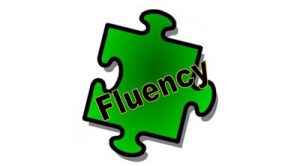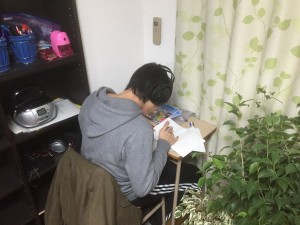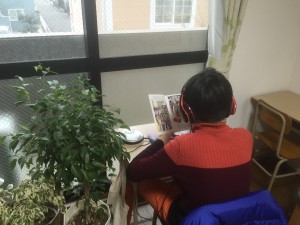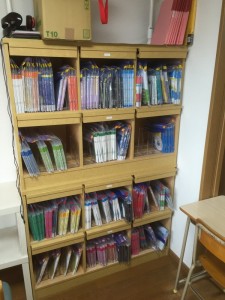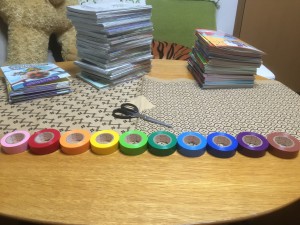conference extensive reading presentations school management teaching
by sendaiben
6 comments
The Last Lecture (well, workshop)
ER Program Design and Implementation
Extensive Reading World Congress, Toyo Gakuen, Tokyo
Friday August 4th, 15:30-18:00
At the beginning of next month I’ll be doing a pre-conference workshop at the Extensive Reading World Congress in Tokyo. This will be my last presentation on education.
The title is the same as the book I have been thinking about writing for the last few years. The content too. In a way, it’s the summary of the last ten years of my work as a teacher. I hope it comes together the way I would like it to. If it does it should be a pretty comprehensive introduction to all aspects of designing and running an extensive reading program at the institutional level.
It’s a workshop, so we’ll be doing work. I’m going to use the PDR (preparation, discussion, reaction) framework to structure the group discussions and will cover the following areas:
- Designing a Program
- Selling a Program
- Setting up a Program
- Running a Program
- Leaving a Program
If you come to the conference I hope you will consider spending a couple of hours with us on Friday. I can almost guarantee you will find it useful.
If you have any questions before the event feel free to post them in the comments below.
Academy curriculum extensive listening extensive reading high school junior high school school management
by sendaiben
2 comments
Cambridge Academy: Year Two and Three
Takeoff
The Academy appears to be taking off. We have over 30 JHS1 students starting next month, including half a dozen new prospects that found us through word of mouth (some of our students are doing very well in school) or from our new website. Our new fluency-based curriculum is ready for testing. We’ve rented a second reading classroom and are buying a lot of new books.
We haven’t reached 100 students yet (how naive that goal seems now) but we’re getting closer. We should definitely hit it next year if not before.
You can read previous Academy posts here:
- Extensive Reading for Secondary Students (April 2015)
- Six Months In (September 2015)
- Year One (February 2016)
- Looking at Year Two (March 2016)
- Stocktake (March 2016)
- Shadoku explained (April 2016)
- Some improvements to the curriculum (April 2016)
- December 2016 update (December 2016)
More importantly, we have learned a lot over the last few months and should be able to improve class content and avoid operational issues next year.
2016-17 Academic Year
Some highlights from this year:
- shadoku has been a huge success
- our students are starting to make real progress
- we had incredible eiken results this time round
- word of mouth from our success stories seems to be very positive
- students love graduating from guided ER to independent ER
- varied reading materials work very well (particularly comics)
Some lessons learned:
- we had a ‘pre-Academy’ course this year for elementary 6th grade students that just did reading but I am not at all happy with the results so we’ll be discontinuing it
- scheduling was a huge pain this year and some parents got annoyed with us
- our textbook choices were not great -need to tighten up the output class content
2017-18 Academic Year
A few big changes next year. The biggest is that I’ll be teaching all the junior high school classes, both input (reading) and output (communication). I’m doing this because I want to really work on the curriculum and trial our new fluency materials. We will have over fifty JHS students from April.
We’re increasing class sizes. Until now we’ve had output classes of six, but from April we’ll have up to ten students in a class. I think this should be okay, but I’ll have an assistant for each class just in case. For input classes with the new classroom we’ll be able to increase our max class size from 12 to 22.
We’ll be trialing our new fluency materials with thirty JHS1 students. Limited trials so far seem to indicate that the materials are interesting and easy-to-understand for students. We’ll see how they do over an entire academic year.
We’ll finally have some student manuals that explain the program and what students should be doing in Japanese. Based on my experience of using manuals with university students I expect this will make things more efficient. It will also help parents to understand what we are doing and why.
We’ll be making some administrative changes too to reduce friction and paperwork. The most important is that I already know what days of the week will be JHS1 classes from April 2018. This means we can tell parents about them sooner and have them sign up in January for classes (first come first served). We’ll be asking them to pay the annual fee in order to register, which should reduce sudden cancellations (or at least compensate us somewhat for them).
We’ll be buying a lot of books. I just ordered 300,000 yen’s worth of books for our YL0.1-0.2 library (to deal with those 30+ JHS1 students coming in next month). This will last us a few months, but then we’ll have to make a similar order for YL0.3-0.4, and so on. It looks like 30 is going to be our capacity for a while, so this should be a one-off this year.
I also expect to continue buying intermediate level (YL1.1+) books to expand our collection.
We rented a second reading classroom this month, and will be using it for the JHS1 classes. We’ll keep our current classroom but move the lower-level materials to the new classroom and keep the old one for older students.
Overall
So things are looking good. Growth is slower than I was expecting, but seems to be taking off. Next year should be a big improvement in class quality and I’m hoping to document what I do to make it easier to have other teachers run the classes. We intend to trial our JHS2 fluency materials in 2018 and JHS3 in 2019.
Finally, I think I have figured out how to share the Academy program with other schools. We are creating something called the Academy Mentor Program (AMP) which is basically a time-limited franchise (schools stop paying fees after a few years and can continue using the program). I think it’s a win-win-win. If all goes well we’ll be doing a Beta in 2018.
Anyone else doing interesting things with junior high school students? Would you be interested in getting support/materials/knowhow to launch your own Academy program? Any good books in the YL1.1-3.0 range?
Academy business curriculum extensive reading high school JHS junior high school language courses Language learning school management SHS
by sendaiben
6 comments
Cambridge Academy: December 2016 Update
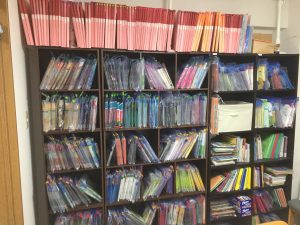
Academy beginner book section (YL0.1-0.7)
You can read about the Cambridge Academy in previous posts:
- Extensive Reading for Secondary Students (April 2015)
- Six Months In (September 2015)
- Year One (February 2016)
- Looking at Year Two (March 2016)
- Stocktake (March 2016)
- Shadoku explained (April 2016)
- Some improvements to the curriculum (April 2016)
Well, a lot has happened since my last post about the Academy (July 2016). We have had several schools visit, and I have talked to lots of people, and I have realised that in order for someone to start a program like the Academy in a school, the following four conditions are necessary:
- the desire and autonomy to begin a program
- the knowledge of ER to explain it to teachers, parents, and students
- a critical number of junior and senior high school students
- a large amount of money for books
So far I haven’t talked to anyone with all four of these, so we are putting our plans to license our system on hold. After all, if there are no potential customers it doesn’t make much sense to develop a product, right?
I’m still very happy to answer questions and give what advice I can though -feel free to leave a comment on this post or drop me an email.
Progress Report
We’re approaching Year Three for the Academy, and a lot is going well, and some things are going less well. We haven’t seen the growth I was hoping for (100 students are still out of reach), but we have a solid 70-some and next year is looking somewhat hopeful to break three figures.
1. Shadoku/Students that didn’t do shadoku last year
Our new first year reading curriculum incorporating shadoku is working extremely well. This year’s first year students are possibly doing better than last years’ (who are now second years). The second years are struggling a bit and I am trying different things to help them out, including having them re-read at a much lower level, etc. Not sure if the situation can be fixed completely, but at least we’ll do better going forwards.
We’ve also bought a lot of new books, particularly at the intermediate and advanced levels. Still not enough, but much closer to being able to meet our students’ future needs.
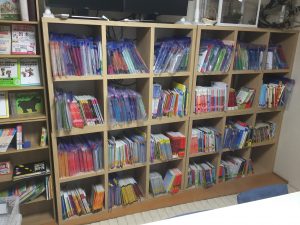
Academy intermediate book section (YL0.8-2.9)
A few of our students are really taking off with their reading, breaking the YL2.0 barrier and becoming more independent and motivated readers. It’s wonderful to see.
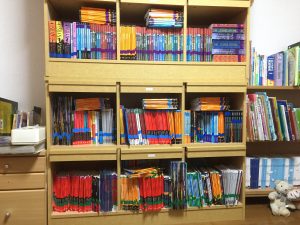
Academy advanced book section (YL3.0~)
I would say that somewhere over half our students are doing really well, and most of the others are doing okay. Maybe 20% are not doing well, and I hope some of them can be salvaged. Most of the ones who are not doing well started off badly, and I wasn’t skilled enough at the time to notice or help them.
2. Student reading targets
I’ve also noticed that students that read a certain amount are doing well, and those that read less are not. Using this data, I have come up with provisional weekly targets that we’ll start using next year with our students:
JHS1 2000-5000 words a week (100,000-250,000 words a year)
JHS2 3000-7000 words a week (150,000-350,000 words a year)
JHS3 4000-10000 words a week (200,000-500,000 words a year)
SHS1 4000-10000 words a week (200,000-500,000 words a year)
SHS2 5000-15000 words a week (250,000-750,000 words a year)
SHS3 6000-20000 words a week (300,000-1,000,000 words a year)
Based on these a student that joined our program in JHS1 and stayed with us until the end of high school would read 1,200,000 to 3,350,000 words. I predict this would provide them with some pretty decent English skills. The targets include in-class reading as well, so students with decent reading speeds might be able to clear the target just by reading in class for 55 minutes a week.
These numbers are provisional and we’ll probably adjust them after working with the students a bit next year. Looking at our current student data though, they seem reasonable. For comparison, in my university classes I require students to read 8,000 words a week to pass the course and 25,000 words a week to get a top grade.
3. Original junior high school output (speaking and writing) curriculum
We’re currently working on making our own curriculum for junior high school students for the output (speaking and writing) classes. As I mentioned in the improvements to curriculum post, the output classes have actually proven to be extremely important, and in the future we’ll be recommending students take both classes if at all possible.
Reading classes are much more profitable, but so far the results of students that only take reading are not satisfactory so we’ll have to abandon that idea as a profit centre 🙂
We should have the original curriculum for JHS1 ready to try from April, and then develop year two in 2017 and year three in 2018. Using the new curricula, we will now place junior high school students in their equivalent year class instead of trying to stream them by ability. High school students will be streamed by ability/level.
4. Assistant teachers
We have a couple of assistant teachers this year. They were students in the program last year, and are now attending local universities. We asked them to help us out as part-time staff.
The huge advantage of recruiting assistants like this is that they are very familiar with the system. It’s a win-win: we get dependable and skilled assistants that we know and trust, and they get to continue their English studies while doing fairly well-paid and interesting part-time work.
Best of all, this model should be fairly sustainable: I would expect we’ll have at least one suitable student per year graduating and we can keep them for four years while they are at university.
5. The next steps
Right now we need to do a few things before the end of the year. I would like to write a student guide to the curriculum that explains what they need to do. I think this will help students and their parents get more out of their classes.
We also need to buy some more books, although we can probably slow down a bit now.
Another stocktake will have to happen at the end of the year and book purchases to fill in holes.
We’re going to need more shelves soon too.
We’ll also be taking over another school and inviting their students to join our program from April. Hopefully this will build up our numbers a little bit.
All good stuff. I’m really looking forward to how the Academy develops as we go into our third year.
Anyone else working on extensive reading systems? Any questions or comments?
curriculum expectations high school junior high school school management
by sendaiben
2 comments
Making a New JHS and SHS Curriculum
Fluency Practice and Clarity
This year we are creating a new curriculum for the Cambridge Academy output classes. I’ve written (and thought) a lot about the Academy reading program input classes, but over 90% of our students also take an output class.
Output classes are small group (up to six students) communication classes focusing mainly on speaking and writing. This year I am taking a closer look at these classes because I have noticed that they may be far more important than I realized.
I believe the reading program delivers most of the benefit to our students. Extensive reading and listening for at least an hour a week is going to complement everything else they are doing at school and outside and give them the amount of input they need to start internalizing the language. However, in our input classes students work alone reading and listening to texts. They don’t necessarily notice the progress they are making, nor do they form emotional connections with their classmates or teachers.
That’s where the output classes come in. Students do pairwork and communicate through speaking and writing. If they enjoy the output classes they will be more motivated and have a positive view of our school.
In a way, the output classes are the heart of the program.
Which is why we are trying to improve them this year. Last year the output classes were a bit of an afterthought, and did not produce the results or the atmosphere we wanted. This year we are shaking things up with some major changes.
No homework
Two things prompted this: I read some articles about how homework doesn’t do much for students and they really resonated with me, and we noticed that only about half of our students were actually doing the homework we set.
Now, I think the benefits of formal homework could be debated, but for us the negative aspects of students not doing homework were far more important. First of all, it was very disruptive to have some students do the homework and others not. We had to take class time to help them catch up at which point that students that actually did the homework got annoyed. Asking/nagging students about homework also created a negative atmosphere in the class, and made some students not want to come to class merely because they felt bad about not doing the homework.
This is why from this month we will not be setting formal homework in our Academy classes. Students have self-study they can do (extensive reading and listening, vocabulary study with Word Engine, listening practice with elllo) but nothing compulsory.
The no homework policy is going well so far.
Fluency practice for speaking and writing
This came from reflecting on university classes based on the PDR method, as well as Yuko Suzuki’s take on shadoku. I have come to believe that our students need fluency practice, ie doing relatively easy linguistic tasks in order to acquire automaticity. What this looks like in practice is doing question and answer drills, timed writing, and repeating speaking activities multiple times.
Again, based on a couple of weeks: better atmosphere, happier students, more satisfied teachers. We’ll see how it goes as students get over the novelty and potentially start getting bored over the next few months.
The Longterm Plan
In the longterm I would like to create an original curriculum for junior and senior high school students that doesn’t require commercial textbooks, based on the principles we are exploring in our output classes. Such a curriculum could be useful not only to Cambridge Academy, but potentially to other private language schools and even junior and senior high schools interested in running a communication class once a week.
More details as this project progresses.
Starting a Reading Program from Scratch
Do This (thanks, Derek Sivers)
I received an email last week. The writer (thanks for the inspiration Brett) asked for advice on how to start a reading program from scratch. No current resources, tiny budget.
What readers should be bought first? What else needs to happen?
This post is the start of an answer.
What is the purpose of the reading program?
You will need to think about the following questions. What is the reading program for?
- Is it to complement existing classes? Create new classes?
- How old are the students?
- What level of English and reading do the students have?
- How much time and money are you willing to put in?
What activities will be done?
The first question is will you use class time for reading? I strongly suggest you do so. In my experience, ER done only outside of class has a low uptake and most students do not do it regularly.
The next question is will students listen as well as read? For beginners and students below intermediate level (around YL 1.0), I strongly recommend listening while reading. It makes a huge difference to student progress and enjoyment.
Finally, will you do shadowing activities? Shadoku, shadowing tadoku (ER) is a very powerful technique, especially at the lower levels. Yuko Suzuki introduced me to the idea, and I will be doing a post soon describing the technique.
What books should be bought first?
With a limited budget, you should buy the following books:
Beginner level:
- Oxford Reading Tree core stories (probably the best materials)
- Story Street (unfortunately out of print now)
Lower-intermediate (JHS3, SHS beginners):
- Foundations Reading Library
- Building Blocks Library (level 4+ only)
- Story Street (level 4+ only, but out of print now)
Make sure you also get the CDs so that students can listen and read, listen only, and do shadowing activities.
What admin is necessary?
You will need to store books. I recommend either having each single book with a CD in the back (use soft CD cases from the 100 yen shop, taped into the back cover) or group the books in sets using ziploc bags (one set with CD per bag). Both approaches work.
Student should keep track of their reading. Counting the number of books is the easiest way, but for a long-term program I think tracking words is more useful. You can find word counts on the books, in the Tadoku Kanzen Guide, or online.
You’ll need to think about how to lend books to students. We use the honour system, but keeping track will reduce book losses (but take time). It’s a decision you will have to make in the context of your program.
Any questions?
Leave a comment below.

